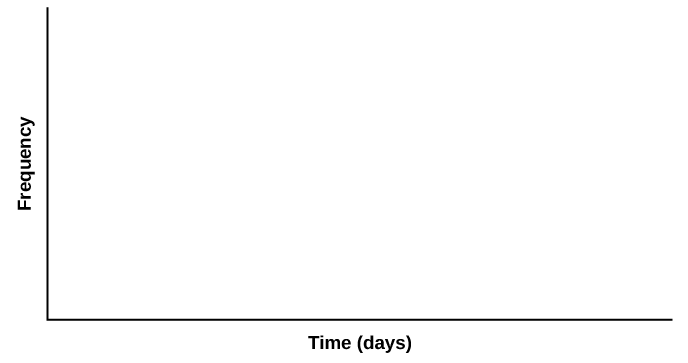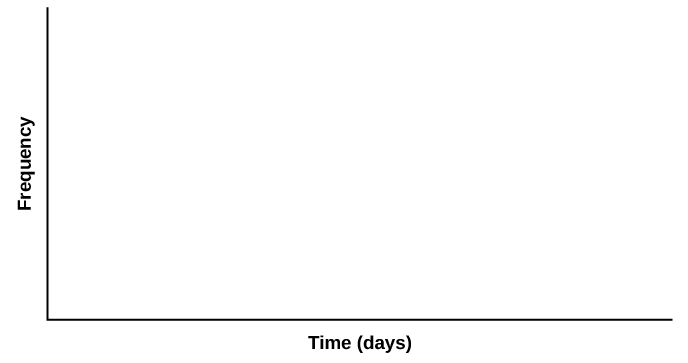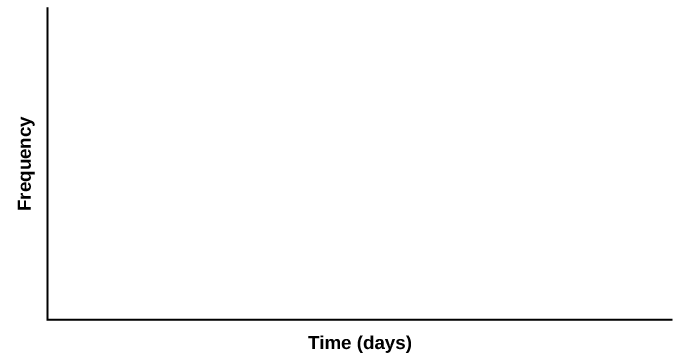49
Central Limit Theorem (Cookie Recipes)
Class Time:
Names:
Student Learning Outcomes
- The student will demonstrate and compare properties of the central limit theorem.
GivenX = length of time (in days) that a cookie recipe lasted at the Olmstead Homestead. (Assume that each of the different recipes makes the same quantity of cookies.)
| Recipe # | X | Recipe # | X | Recipe # | X | Recipe # | X | |||
|---|---|---|---|---|---|---|---|---|---|---|
| 1 | 1 | 16 | 2 | 31 | 3 | 46 | 2 | |||
| 2 | 5 | 17 | 2 | 32 | 4 | 47 | 2 | |||
| 3 | 2 | 18 | 4 | 33 | 5 | 48 | 11 | |||
| 4 | 5 | 19 | 6 | 34 | 6 | 49 | 5 | |||
| 5 | 6 | 20 | 1 | 35 | 6 | 50 | 5 | |||
| 6 | 1 | 21 | 6 | 36 | 1 | 51 | 4 | |||
| 7 | 2 | 22 | 5 | 37 | 1 | 52 | 6 | |||
| 8 | 6 | 23 | 2 | 38 | 2 | 53 | 5 | |||
| 9 | 5 | 24 | 5 | 39 | 1 | 54 | 1 | |||
| 10 | 2 | 25 | 1 | 40 | 6 | 55 | 1 | |||
| 11 | 5 | 26 | 6 | 41 | 1 | 56 | 2 | |||
| 12 | 1 | 27 | 4 | 42 | 6 | 57 | 4 | |||
| 13 | 1 | 28 | 1 | 43 | 2 | 58 | 3 | |||
| 14 | 3 | 29 | 6 | 44 | 6 | 59 | 6 | |||
| 15 | 2 | 30 | 2 | 45 | 2 | 60 | 5 |
Calculate the following:
- μx = _______
- σx = _______
Collect the DataUse a random number generator to randomly select four samples of size n = 5 from the given population. Record your samples in (Figure). Then, for each sample, calculate the mean to the nearest tenth. Record them in the spaces provided. Record the sample means for the rest of the class.
- Complete the table:
Sample 1 Sample 2 Sample 3 Sample 4 Sample means from other groups: Means: \(\overline{x}\) = ____ \(\overline{x}\) = ____ \(\overline{x}\) = ____ \(\overline{x}\) = ____ - Calculate the following:
- \(\overline{x}\) = _______
- s\(\overline{x}\) = _______
- Again, use a random number generator to randomly select four samples from the population. This time, make the samples of size n = 10. Record the samples in (Figure). As before, for each sample, calculate the mean to the nearest tenth. Record them in the spaces provided. Record the sample means for the rest of the class.
Sample 1 Sample 2 Sample 3 Sample 4 Sample means from other groups Means: \(\overline{x}\) = ____ \(\overline{x}\) = ____ \(\overline{x}\) = ____ \(\overline{x}\) = ____ - Calculate the following:
- \(\overline{x}\) = ______
- s\(\overline{x}\) = ______
- For the original population, construct a histogram. Make intervals with a bar width of one day. Sketch the graph using a ruler and pencil. Scale the axes.

- Draw a smooth curve through the tops of the bars of the histogram. Use one to two complete sentences to describe the general shape of the curve.
Repeat the Procedure for n = 5
- For the sample of n = 5 days averaged together, construct a histogram of the averages (your means together with the means of the other groups). Make intervals with bar widths of \(\frac{1}{2}\) a day. Sketch the graph using a ruler and pencil. Scale the axes.

- Draw a smooth curve through the tops of the bars of the histogram. Use one to two complete sentences to describe the general shape of the curve.
Repeat the Procedure for n = 10
- For the sample of n = 10 days averaged together, construct a histogram of the averages (your means together with the means of the other groups). Make intervals with bar widths of \(\frac{1}{2}\) a day. Sketch the graph using a ruler and pencil. Scale the axes.

- Draw a smooth curve through the tops of the bars of the histogram. Use one to two complete sentences to describe the general shape of the curve.
Discussion Questions
- Compare the three histograms you have made, the one for the population and the two for the sample means. In three to five sentences, describe the similarities and differences.
- State the theoretical (according to the clt) distributions for the sample means.
- n = 5: \(\overline{x}\) ~ _____(_____,_____)
- n = 10: \(\overline{x}\) ~ _____(_____,_____)
- Are the sample means for n = 5 and n = 10 “close” to the theoretical mean, μx? Explain why or why not.
- Which of the two distributions of sample means has the smaller standard deviation? Why?
- As n changed, why did the shape of the distribution of the data change? Use one to two complete sentences to explain what happened.

